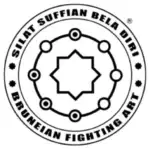Learning Silat: A Family Tradition
When and why did I start learning Silat? Well, it all began in my childhood, where I had the privilege of learning this ancient martial art from my grandfather and great grandfather. Silat was not just a hobby or a sport for us; it was a way of life. It was a means to learn how to defend ourselves and protect our loved ones.
The Importance of Self-Defense
Silat, in its essence, is a form of basic self-defense. It equips individuals with the skills and techniques to protect themselves in dangerous situations. Whether it’s facing an attacker with a knife or encountering a threat to our family, Silat provides us with the knowledge and confidence to defend ourselves and those we care about.
Preserving Tradition in a Modern World
Silat Suffian Bela Diri, the style I practice, was originally intended solely for our family. It was never meant to be shared outside of our cultural circle. When I started teaching Silat to individuals from different backgrounds, I faced the challenge of conveying the essence and significance of each movement.
Teaching a traditional art form to those unfamiliar with the culture requires careful consideration. I aim to ensure that my students understand the historical and cultural context behind each technique. By focusing on the basics, I provide a strong foundation for them to build upon. This approach allows them to grasp the essence of Silat and appreciate its effectiveness.
While I teach the physical aspects of Silat, I also emphasize the importance of the mindset that makes the art both effective and efficient. It’s not just about fighting; it’s about understanding why and how we move the way we do. By delving into the cultural background, we gain insight into the reasons behind our techniques.
The Influence of Culture and Environment
For example, the way we move in Silat is influenced by the environment and mindset of the people in Brunei, where the art originated. Our techniques are shaped by the unique challenges we face in our daily lives. The use of knives and machetes, for instance, stems from the practicality of these tools in a hot and humid country like Brunei.
By learning how to defend against the weapons commonly used in our culture, we develop a deeper understanding of the art and its application in real-life situations. Silat is not just about physical movements; it’s about adapting to our surroundings and using our resources effectively.
In conclusion, my journey in learning and teaching Silat has been rooted in preserving tradition, imparting the knowledge passed down through generations, and helping others understand the cultural significance of this martial art. Silat is not just a means of self-defense; it’s a reflection of our heritage and a way to connect with our roots.
